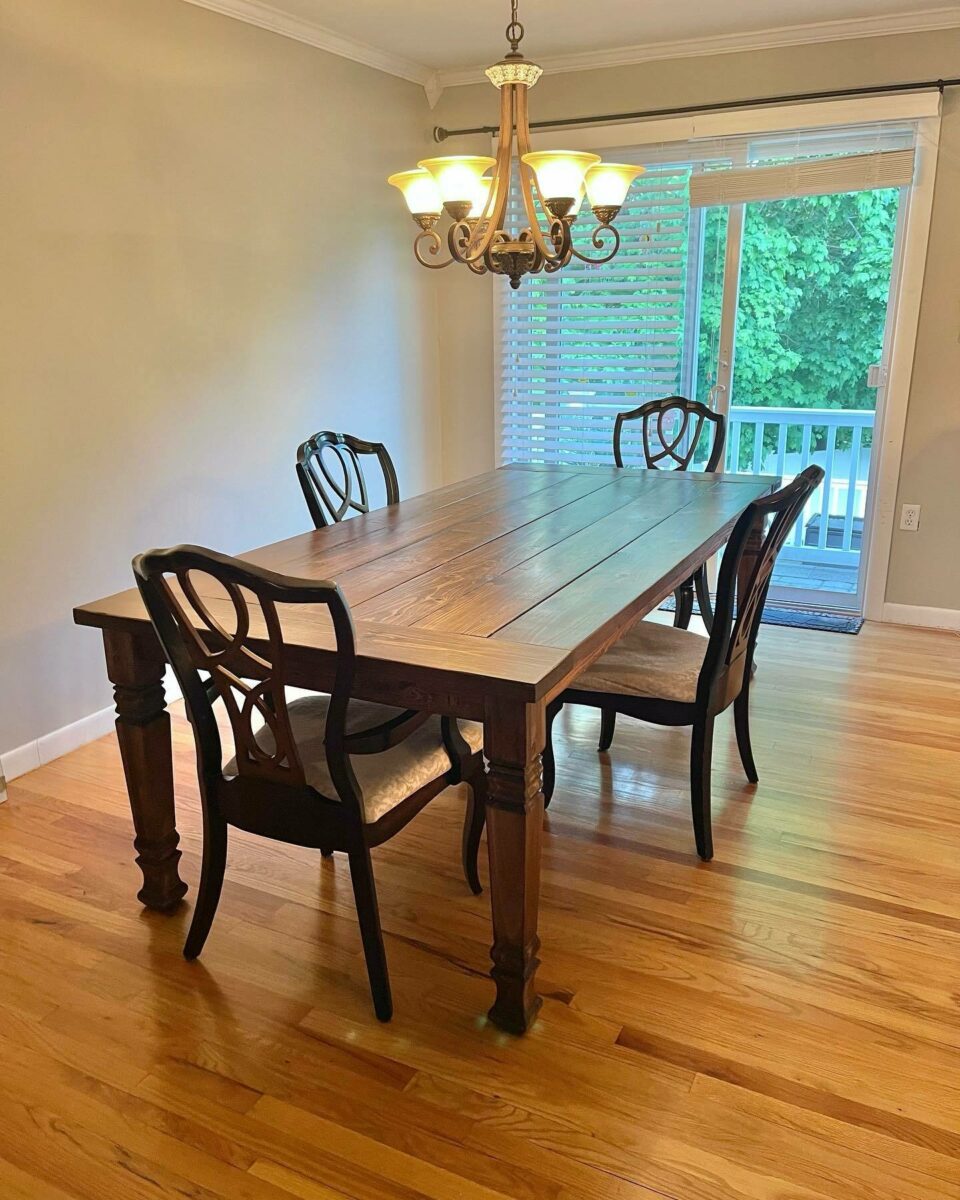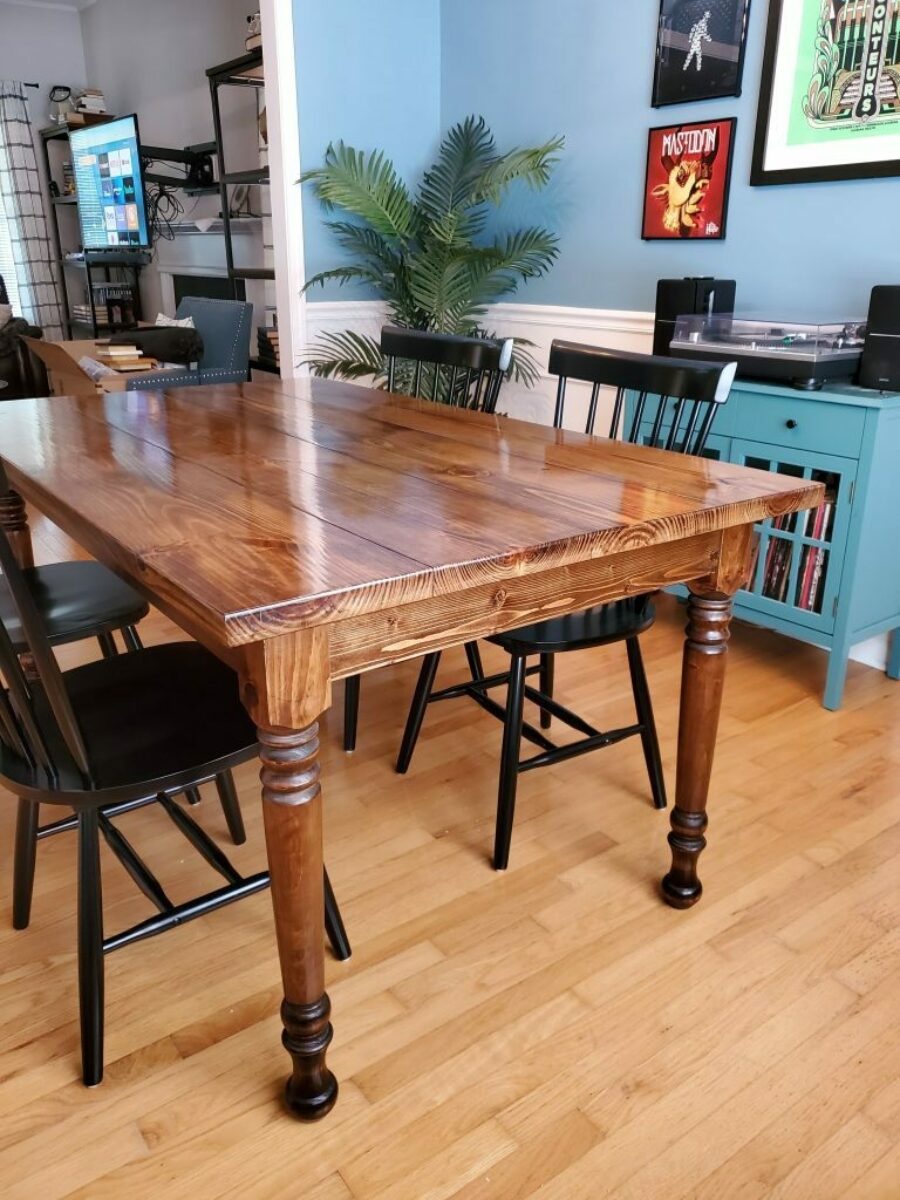How to Maintain and Care for Your Dining Room Table Legs
How to Maintain and Care for Your Dining Room Table Legs
Blog Article
Just How to Pick the Perfect Dining Room Table Legs for Your Home Decoration
Picking the suitable dining room table legs is a nuanced procedure that requires mindful consideration of numerous components, including your space constraints, aesthetic choices, and sensible requirements. The interplay in between materials, styles, and dimensions can substantially influence the ambiance of your eating location, making it vital to approach this decision carefully.
Assess Your Eating Room
Examining your dining room is crucial for choosing the right table legs that complement both aesthetics and performance. Begin by measuring the dimensions of your eating area, including ceiling height, flooring area, and distance to other furniture. This information will assist figure out the suitable dimension and elevation of your eating table, which straight affects the selection of table legs.
Next, consider the style and format of your eating room. For example, an open-concept style might benefit from table legs that use aesthetic lightness, such as slim steel or acrylic choices. On the other hand, a more conventional setup may ask for durable wood legs that supply a sense of durability.
Evaluate the existing shade palette and materials in your eating area. Integrating the table legs with these aspects develops a natural look that improves the overall design.
Inevitably, a detailed analysis of your eating space will certainly direct you in making an informed decision, making certain that your table legs not just enhance the visual appeal but also serve practical functions.
Consider Your Design Preferences
When picking eating room table legs, it is necessary to assess your personal style choices, as they significantly influence the general visual of your dining room. Your option of table legs can either complement or contrast with existing design, making it crucial to straighten them with your favored indoor design theme.
If your home leans towards a contemporary visual, think about smooth metal or minimalist wooden legs that offer a tidy, minimalist appearance. For a much more traditional approach, luxuriant wooden legs with complex carvings can include a touch of sophistication and sophistication. Industrial designs take advantage of robust, resources such as reclaimed timber and steel combinations, mirroring a sturdy charm.
In addition, farmhouse and rustic designs often prefer durable, beefy legs that evoke a sense of warmth and comfort. On the other hand, if your design is eclectic, you might pick unusual forms or a mix of materials to develop aesthetic interest.

Evaluate Material Options
The option of product for eating space table legs plays an essential duty in both durability and aesthetic allure. Common materials include wood, steel, and composite options, each offering distinct features that can influence the general look and durability of your table.
Wood is a timeless choice, recognized for its heat and convenience. Hardwoods like oak and walnut provide phenomenal stamina and can be ended up in various discolorations to match any kind of design. Nonetheless, softwoods like yearn are a lot more prone to damages and scrapes, making them much less ideal for high-traffic locations.
Metal legs, commonly crafted from steel or light weight aluminum, exude modernity and industrial beauty. They are resistant and extremely long lasting to put on, making them suitable for family members with kids or frequent gatherings (dining room table legs). Furthermore, steel can be ended up in different shades, enhancing the customization opportunities
Composite materials, such as MDF or laminate, deal affordability and diverse styles. While usually less durable than solid timber or steel, they can still supply an elegant appearance and are often easy to maintain.
Ultimately, the product you choose need to line up with your way of life, visual preferences, and the level of use your table will certainly experience.
Determine Elevation and Size
Choosing the proper height and size for your dining space table is essential for both functionality and comfort. The common elevation for eating tables normally varies from 28 to 30 inches, allowing ample legroom for the majority of people when seated. It is crucial to take into consideration the measurements of your dining room and go the types of chairs you prepare to utilize.

Furthermore, think about the percentages of your dining-room. A larger table in a sizable area can develop a grand setting, while a smaller sized table functions well in even more intimate setups. Eventually, the appropriate elevation and size will certainly integrate with your general style and improve the dining experience for you and your guests.
Explore Personalization Possibilities

In addition, the design of the legs can be personalized to fit different styles, such as rustic, contemporary, or commercial. For instance, tapered legs can evoke a mid-century modern-day feeling, while chunky, block-style legs may resonate with standard or farmhouse style.
Homeowners can additionally check out color finishes, from natural wood stains to repaint, allowing them to match or comparison with the tabletop and surrounding style.
Furthermore, leg height can be adapted to suit certain seating plans or individual choices, boosting both convenience and functionality.
Last but not least, special decorations, such as carvings or ornamental braces, can even more individualize the table legs, making the eating experience not simply a declaration yet a meal piece in the home. By considering these customization choices, property owners can develop a dining-room table that absolutely reflects their individuality.
Conclusion
Choosing the optimal eating area table legs needs careful factor to consider of various factors, consisting of the dimensions of the dining room, style choices, material resilience, and wanted elevation. Customization options additionally boost the capability to accomplish a cohesive visual that complements the total design. By systematically evaluating these aspects, house owners can guarantee that the chosen table web link legs not only meet practical requirements yet additionally add favorably to the dining experience and ambiance of the home.
Choosing the ideal eating space table legs is a nuanced procedure that calls for careful consideration of various components, including your special info area constraints, visual choices, and useful requirements.Assessing your eating space is important for selecting the right table legs that enhance both appearances and capability.When figuring out size, gauge the area where the table will certainly be placed to guarantee it fits easily, enabling for at least 36 inches of clearance around the table for very easy movement. A larger table in a roomy location can create a grand setting, while a smaller sized table works well in even more intimate settings.Selecting the optimal dining room table legs needs cautious factor to consider of numerous factors, consisting of the dimensions of the eating room, style choices, material durability, and wanted elevation.
Report this page